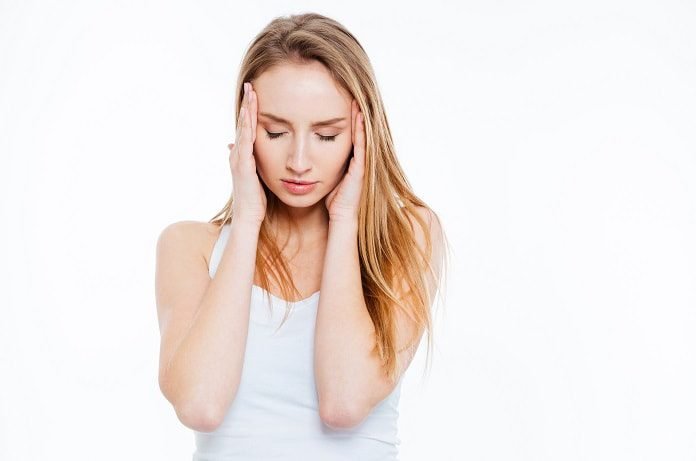A comprehensive review of studies assessing the effectiveness of complementary therapies for headache found that acupuncture, massage, yoga, biofeedback therapy and meditation seem to have a positive effect on migraine & tension headaches. However, the researchers noted that the overall quality of the evidence reviewed was low.
Headache is a very common condition. Whilst some headaches are symptoms of underlying diseases such as a brain tumor or brain blood clot, most are “primary” – that is they occur without any other illness. There are different types of primary headache including tension headache, migraine and cluster headaches. Each type has different triggers and patterns of pain.
Drug treatments are often effective in treating primary headaches, but patients may also seek alternative or complementary therapies. For centuries, various complementary treatments have been used in different cultures. For example, traditional Chinese medicine and acupuncture, massage therapy, yoga, or the use of botanicals (herbs and plants). More recent treatments include dietary supplements and hyperbaric oxygen therapy. Academic groups such as the National Center for Complementary and Integrative Health (NCCIH) in the USA have supported scientific research to examine whether complementary therapies are effective and how they can be used alongside conventional drug treatments. Researchers from the Mayo Clinic performed a comprehensive review of recently published studies on the use of complementary therapies in primary headache. They reported their findings in the British Medical Journal.
After identifying relevant studies published between 2011 and 2016, researchers reviewed 5 combined analyses, 7 systematic reviews and 34 randomized controlled trials. They looked at studies on several different complementary therapies, including:
- Acupuncture – a type of traditional Chinese Medicine which involves inserting very fine needles at specific points in the body, thought to be along energy pathways. The needles can be stimulated manually or electrically. This therapy is thought to rebalance the body’s energy or “Qi”.
- Manual therapy – specialist practitioners such as massage therapists, osteopathists and chiropractors use physical techniques to treat pain, stiffness and muscle conditions.
- Yoga and Tai Chi – exercise and breathing techniques used to promote health and wellbeing.
- Botanicals, dietary supplement and diet alteration. Botanicals studies included feverfew and lavender oil. Dietary supplements studies included riboflavin, magnesium, coenzyme Q10, folic acid, Vitamins B6 & B12 and omega-3. Diet alteration studies included weight loss diets and high fat/low carbohydrate diets.
- Hyperbaric oxygen therapy – patients are placed in a chamber to breathe 100% oxygen. This is thought to improve the body’s healing processes and has been used in the treatment of a wide variety of conditions.
- Hydrotherapy – using hot and cold baths to dilate and constrict blood vessels.
- Mind-body therapies – involves meditation techniques and biofeedback therapy where the patient is connected to sensors that help them control involuntary body functions such as heart rate and breathing. These techniques are thought to promote relaxation.
The researchers noted that the overall quality of the evidence reviewed was low and the studies had several limitations – including small sample sizes, brief study periods and inconsistent treatment compliance. They suggest that some practices might only be helpful within certain cultures – for example Tai Chi is most often practiced in Asia and may be more effective in that population. The available evidence suggests that acupuncture, massage, yoga, biofeedback therapy and meditation have a positive effect on migraine and tension headaches. However, further research is needed to determine the best way to use complementary therapy in patients with primary headache.
Written by: Julie McShane, Medical Writer



